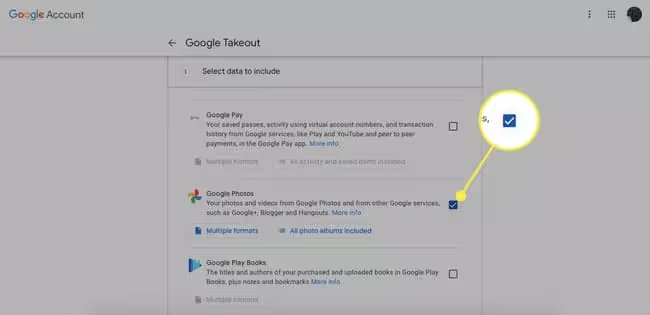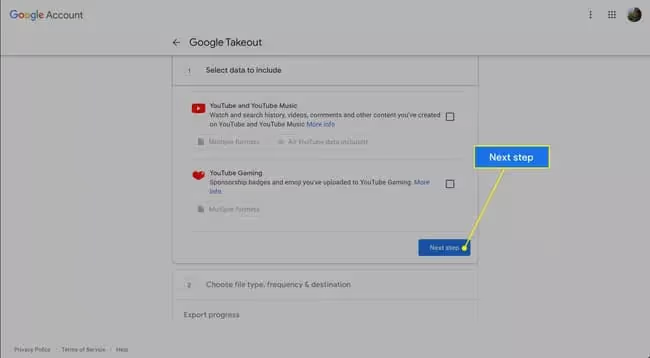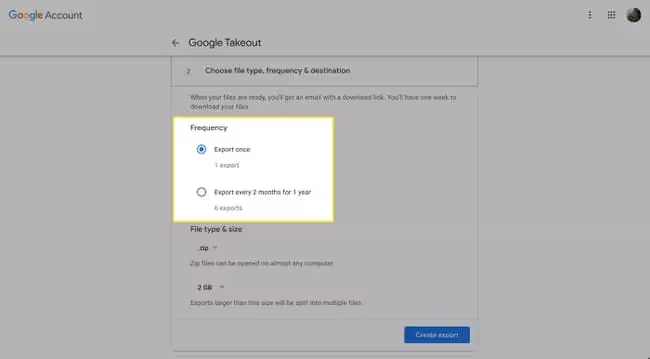
Developing your LinkedIn network can be a powerful driver of professional growth.
An effective way to do this is to import your existing contacts to LinkedIn. Google Takeout, a Google service for exporting your data, can play a crucial role in this process.
This guide will show you how to use Google Takeout to export your email contacts and import them to LinkedIn, increasing your network and business opportunities.Benefits of Importing Contacts to LinkedIn
- Increase in the network : Expand your professional network by connecting with people you already know.
- High Acceptance Rate : Invitations sent to acquaintances have a higher acceptance rate.
- Multiplication of contact points : Strengthen your professional relationships by interacting on multiple platforms.
How to Use Google Takeout for LinkedIn
Exporting your Contacts
Google Takeout offers a convenient way to download your data or move them to another device.
It's the easiest way to move your data from Google's digital domain to your own.
If this is your first time using Takeout, start with something manageable.
We use a photo album as an example in the following instructions.
- Navigate to takeout.google.com and choose Deselect all. By default, Google Takeout selects all possible data and file types to include in the Takeout archive.
- Scroll through the list and check the Google Photos box.

- Select All Photo Albums Included to select individual photo albums to include in the Takeout archive.
- By default, all photo albums are selected.
- Select Deselect All, then select the individual photo albums you want to download.
- Once done, select OK.

- Scroll to the bottom of the screen and select Next Step.

- You are asked to select the file type, frequency, and destination of your archives.
- You are also prompted to select the maximum size for each archive file.
- Under Delivery Method, choose where to download the archive file when it is ready.

- Under Frequency, choose how often to export files for download.
- Select Export once or Export every 2 months for 1 year.

- Under File Type and Size, choose the file type for the archive file and the maximum size.
The default file type is.zip, which can be opened on most computers. The other option is.tgz, which may require additional software to be opened on a Windows computer.
- Select Create Export, then wait while Google gathers the files and archives them according to your specifications.
Depending on the number and size of the files you requested, creating the archive takes anywhere from a few minutes to several days. Google took about three minutes to create a 175 MB archive file.

- When archiving is complete, Takeout sends you an email with a link to the archived files. In this email, select Download Archive to begin the download, just like any other file. Your data goes from Google servers to your Downloads folder.
Importing your Contacts to LinkedIn
- Extract your Contacts : Open the downloaded archive and extract the contacts in vCard or CSV format, whichever you prefer.
- Go to LinkedIn : Log in to your LinkedIn account.
- Import your Contacts : On LinkedIn, navigate to “Network” then “Contacts.” Look for the option to import contacts and follow the instructions to download your extracted contact file.
- Send Invitations : Once your contacts have been imported, LinkedIn will suggest that you send connection invitations. Select the ones you want to connect with.
Automation and Reminders for Importing Contacts with n8n
Automating the import of your email contacts to LinkedIn can save you time and ensure that your network is regularly updated. Here's how newbies can set up this process:
Step 1: Setting up n8n for Automation
- Registration on n8n: Go to the site of N8n and create an account to get started.
- Creating a Workflow: Once connected, use the n8n interface to create a new workflow.
- Source Setup: Select your email service as the workflow trigger. For example, if you're using Gmail, choose the corresponding Gmail node.
- Action definition: Set up the action so that each new email received automatically adds contact information to a Google Sheets spreadsheet.
Step 2: Workflow Testing and Activation
- Test the Workflow: Before activating it, test the workflow by sending a test email to yourself to verify that the information is correctly added to the spreadsheet.
- Activate Workflow: If the test is successful, activate the workflow to run automatically.
Step 3: Setting up Google Takeout for Regular Exports
- Visit Google Takeout: Go to Google Takeout.
- Select Contacts: Check the “Contacts” box to export only this data.
- Export Frequency: Choose to create an archive once or at a regular frequency, such as every month.
Step 4: Receiving and Using Data
- Email reception: Google will send an email with a download link once the export is ready.
- Download and Extract: Download the file and extract the contacts.
Step 5: Regular LinkedIn Import
Importing to LinkedIn
- Connect to LinkedIn: Go to your LinkedIn account.
- Import Contacts: Use the LinkedIn contact import option to download your contact file.
Sending Invitations
- Select and Invite: LinkedIn will suggest people to connect based on imported contacts. Select the ones you want to add to your network and send invites.
By using n8n to automate the addition of contacts to a spreadsheet and by setting up regular exports via Google Takeout, you can effectively maintain and develop your LinkedIn network. This allows you to devote more time to professional engagement and creating meaningful relationships.
Conclusion
Importing your email contacts to LinkedIn via Google Takeout is an effective way to quickly develop your professional network.
By following the steps outlined in this guide, you can maximize your growth opportunities by connecting with knowledge on a professional platform.
Remember to engage regularly with your network to build strong and lasting relationships.
.svg)


